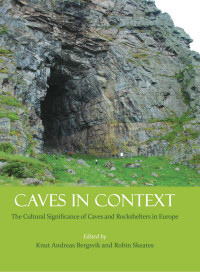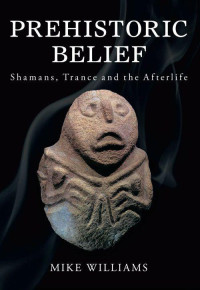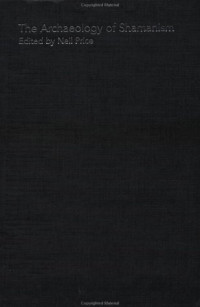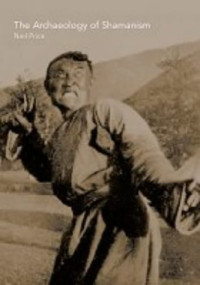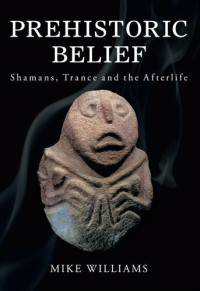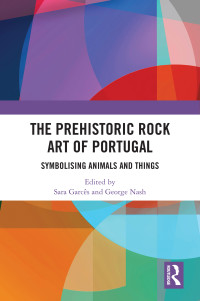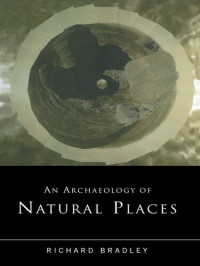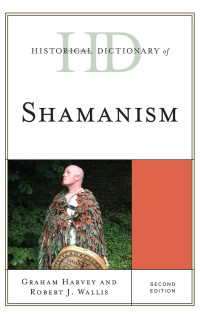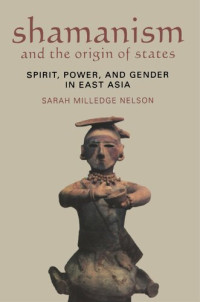
Lands of the Shamans
Unknown
Shamanism' is a term with specific anthropological roots, but which is used more generally to cover a set of interactions between a practitioner or shaman' and a spiritual or religious realm beyond the reach of most members of the community. It has often been considered from an anthropological viewpoint, but this book gathers the most recent studies on a subject which has not been comprehensively studied by archaeologists. By putting together experts from two continents who have studied the phenomenon of shamanism, Lands of the Shamans, through carefully selected case studies, uses the archaeological evidence to construct the shamans' worldview, landscape, and cosmology. Recent interdisciplinary studies support the idea of the existence of shamanistic representations as long ago as the Middle/Upper Palaeolithic, but at the same time, do not follow developments during the history of humankind. As ethnographic evidence shows, shamanistic activity represents a complex phenomenon that is extremely diversified, its spiritual activity possessing a large variety of expressions in the material culture. In other words, shamanism could be defined as a series of differing spiritual world views which model the material culture and the landscape. Throughout the archaeological record of all prehistoric and historic periods, there is a series of visual representations and objects, and landscape alterations that could be ascribed to these differing world views, many thought to represent shamanistic cognition and activity. The shaman's landscape reveals itself to the world as one of multifaceted spiritual and material activity. Consequently, this first book dedicated completely to the shamanistic landscape presents in fresh perspective the landscapes of the lower and upper worlds as well as their phenomenological experience. Case Studies come from Europe, North America, and Asia.
About the Author: Dragoş Gheorghiu is a cultural anthropologist and an experimental archaeologist, currently teaching at the Doctoral School of the National University of Arts in Bucharest. His approach to the European Chalcolithic uses semiotics and rhetoric to interpret the material culture and the landscapes of the past. Another main research area is the rituality of prehistoric technologies and places.
About the Author: Dr George Nash is an Associate Professor at the Instituto Politécnico de Tomar (IPT) in Portugal and Visiting Fellow at the University of Bristol. In the Mação facility of IPT, George is responsible for teaching prehistory, material culture and theory, and supervises within the post-graduate school. George, who completed his doctoral thesis in Norway is also employed part-time for environmental consultants SLR and writes for television and radio, focusing on such diverse subjects as industrial and military archaeology, prehistoric mortuary practices, prehistoric and contemporary art. Currently, George is undertaking field research in Israel, Chile and Wales.
About the Author: Herman Bender is an independent researcher with a background in geology and industry. An amateur astronomer with decades of experience and a historical consultant, he has been internationally published in the fields of archeoastronomy, prehistoric trail research, petroform research, applied geophysics and cultural landscape studies.
About the Author: Emilia Pasztor is an archaeologist specializing in late Prehistoric Europe working as an expert for Museums János Thorma and Istvan Turr. Her main research focuses on prehistoric sky lore and cosmological notions.
About the Author: Dragoş Gheorghiu is a cultural anthropologist and an experimental archaeologist, currently teaching at the Doctoral School of the National University of Arts in Bucharest. His approach to the European Chalcolithic uses semiotics and rhetoric to interpret the material culture and the landscapes of the past. Another main research area is the rituality of prehistoric technologies and places.
About the Author: Dr George Nash is an Associate Professor at the Instituto Politécnico de Tomar (IPT) in Portugal and Visiting Fellow at the University of Bristol. In the Mação facility of IPT, George is responsible for teaching prehistory, material culture and theory, and supervises within the post-graduate school. George, who completed his doctoral thesis in Norway is also employed part-time for environmental consultants SLR and writes for television and radio, focusing on such diverse subjects as industrial and military archaeology, prehistoric mortuary practices, prehistoric and contemporary art. Currently, George is undertaking field research in Israel, Chile and Wales.
About the Author: Herman Bender is an independent researcher with a background in geology and industry. An amateur astronomer with decades of experience and a historical consultant, he has been internationally published in the fields of archeoastronomy, prehistoric trail research, petroform research, applied geophysics and cultural landscape studies.
About the Author: Emilia Pasztor is an archaeologist specializing in late Prehistoric Europe working as an expert for Museums János Thorma and Istvan Turr. Her main research focuses on prehistoric sky lore and cosmological notions.
সাল:
2018
প্রকাশক:
Casemate Publishers & Book Distributors, LLC
ভাষা:
english
ISBN 10:
1785709550
ISBN 13:
9781785709555
ফাইল:
EPUB, 23.04 MB
IPFS:
,
english, 2018
 Amazon
Amazon  Barnes & Noble
Barnes & Noble  Bookshop.org
Bookshop.org  File converter
File converter অনুসন্ধানের আরো ফলাফল
অনুসন্ধানের আরো ফলাফল More benefits
More benefits ![Robert J Wallis [Wallis, Robert J] — Shamans/Neo-Shamans: Ecstasy, Alternative Archaeologies and Contemporary Pagans](https://s3proxy.cdn-zlib.se/covers200/collections/userbooks/2efd7efeb3ac5b07881edd37080819d415fa2b15d9e7571dd46f7ac9d6a9b93c.jpg)




